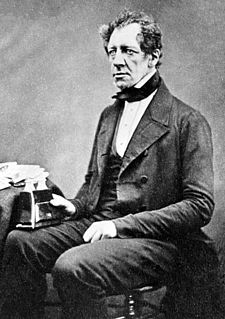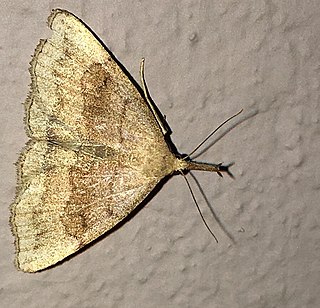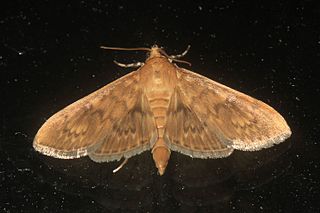
Francis Walker was an English entomologist. He was born in Southgate, London, on 31 July 1809 and died at Wanstead, England on 5 October 1874. He was one of the most prolific authors in entomology, and stirred controversy during his later life as his publications resulted in a huge number of junior synonyms.

Xylomyidae is a family of flies known commonly as the wood soldier flies. They are xylophagous and are associated with dead or dying wood.

Hypena is a genus of moths in the family Erebidae. It was first described by Franz von Paula Schrank in 1802. These non-migratory moths overwinter as pupae and almost never estivate as adults.
Cryptobotys is a monotypic moth genus of the family Crambidae described by Eugene G. Munroe in 1956. Its only species, Cryptobotys zoilusalis, was described by Francis Walker in 1859. It is found in Cuba, Jamaica, Puerto Rico, Central America and the southern United States, where it has been recorded from Florida.

Adrapsa is a genus of moths of the family Erebidae. It was erected by Francis Walker in 1859.
Labanda is a genus of moths of the family Nolidae erected by Francis Walker in 1859.
Chusaris is a genus of moths of the family Erebidae. It was erected by Francis Walker in 1859.

Corgatha is a genus of moths of the family Erebidae erected by Francis Walker in 1859.
Dierna is a genus of moths of the family Erebidae erected by Francis Walker in 1859.

Elusa is a genus of moths of the family Noctuidae erected by Francis Walker in 1859.

Perina is a genus of tussock moths in the family Erebidae. It was described by Francis Walker in 1855 and is found in China, Sri Lanka and throughout India.

Phalaenostola metonalis, the pale phalaenostola, tufted snout or pale epidelta, is a moth of the family Erebidae. The species was first described by Francis Walker in 1859. It is found in North America from British Columbia to Newfoundland, south to North Carolina, west to Missouri.

Hypena obacerralis is a moth of the family Erebidae. It is found throughout Africa, the Middle East and South Asia and Malaysia.

Pyrausta onythesalis is a moth in the family Crambidae. It was described by Francis Walker in 1859. It is found in North America, where it has been recorded from Florida to Georgia, Iowa, Kansas, Oklahoma, Texas and Arizona.

Ischnurges gratiosalis is a moth in the family Crambidae. It was described by Francis Walker in 1859. It is found in Sri Lanka, China, Taiwan and India and on Borneo and the Maldives.

Psara dryalis is a moth in the family Crambidae. It was described by Francis Walker in 1859. It is found in the Dominican Republic, Puerto Rico, Jamaica, Cuba and from the southwestern United States to Central America.
Pycnarmon lactiferalis is a moth in the family Crambidae. It was described by Francis Walker in 1859. It is found in the Russian Far East, Japan, China, India and Taiwan.
Salbia tytiusalis is a moth in the family Crambidae. It was described by Francis Walker in 1859. It is found in Florida, the West Indies and Central America, including Honduras.
Mnesictena daiclesalis is a moth in the family Crambidae. It was described by Francis Walker in 1859. It is endemic to New Zealand.
Ulopeza idyalis is a moth in the family Crambidae. It was described by Francis Walker in 1859. It is found in Sri Lanka, India, as well as on Borneo and Sulawesi.












